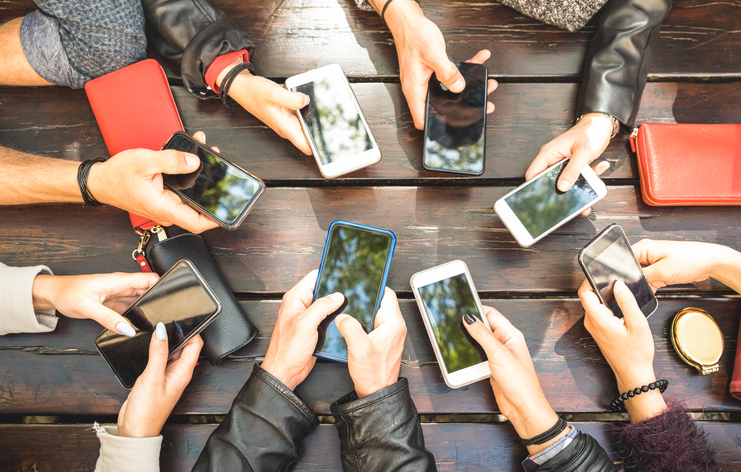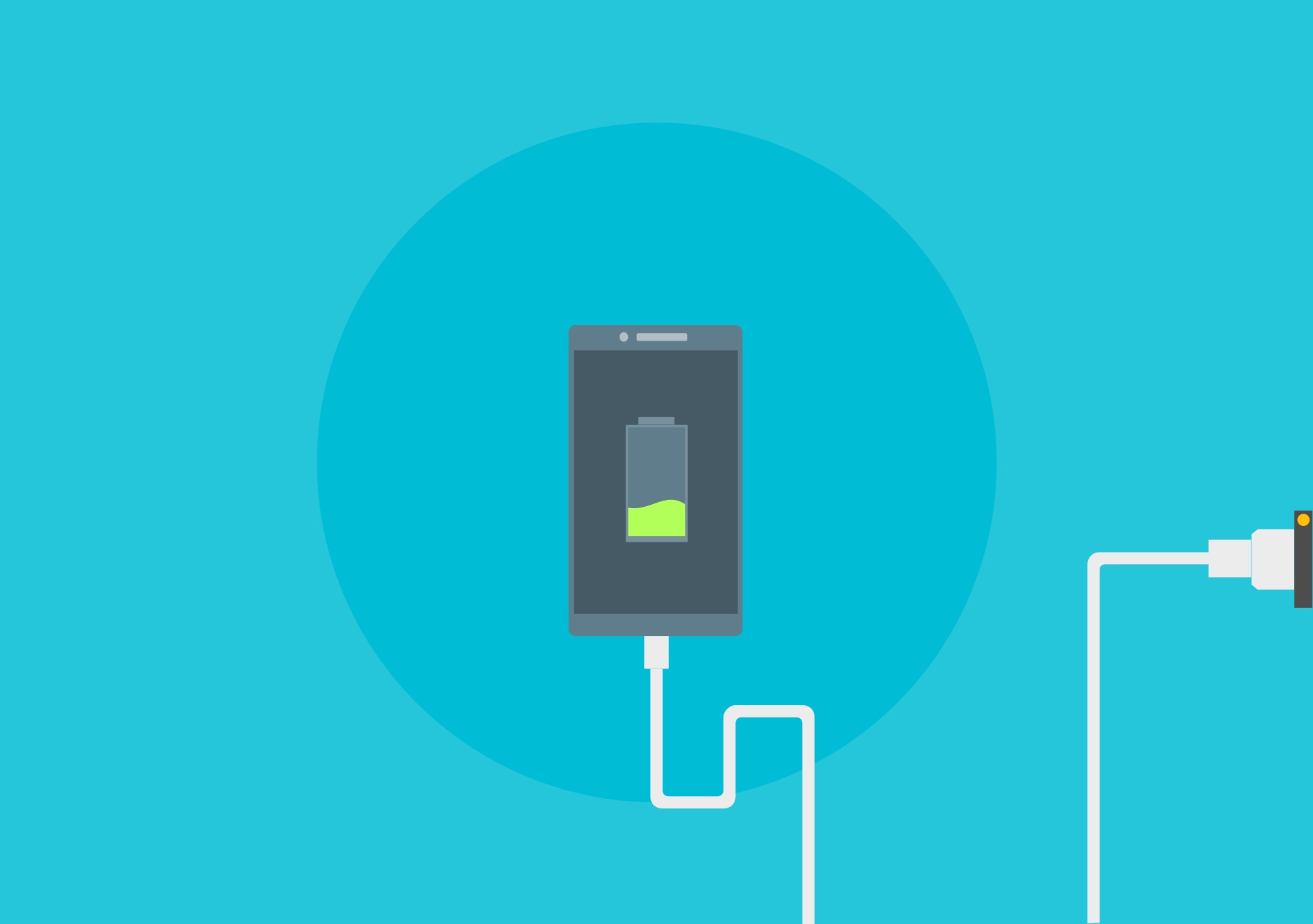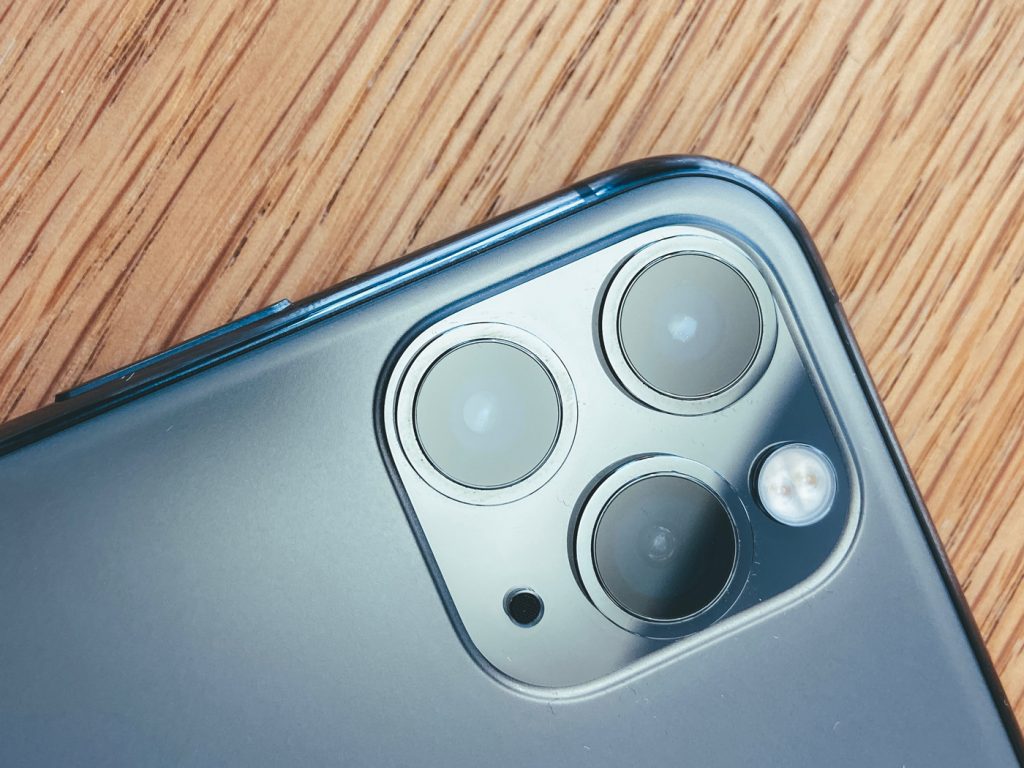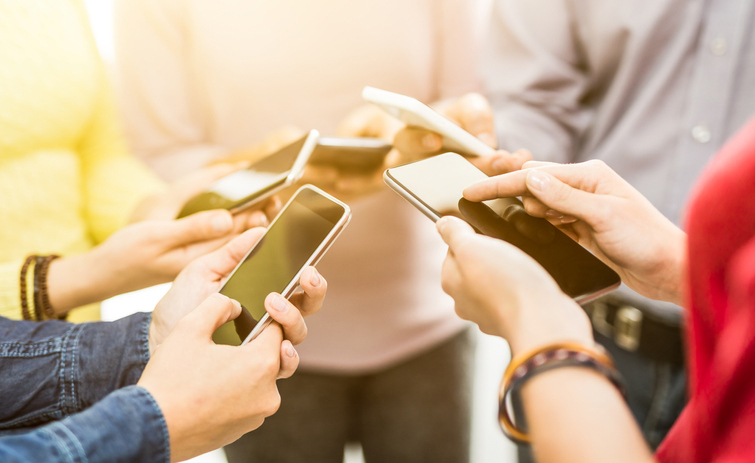Latest News
The Ultimate Guide to Buying a Mobile Phone
By |
30th June, 2021 |
Categories:

No matter how many times you’ll have done it over the years, buying a new mobile phone is always something to look forward to. But unless you’ve kept up to date on all the latest technological developments you might find the experience rather bewildering.
That’s why it’s always better to be well prepared before you get your wallet out and make what could be a significant investment.
After all, if you haven’t thought through all your options, you could easily end up with an inappropriate handset or contract that turns your tech-fuelled dreams into a nightmare! This ultimate go-to guide will help you make the right decisions when buying your next mobile phone.
Jammed full of great ideas, this guide is essential reading for anyone swapping their well-loved handset for the latest must-have gadget. With in-depth guidance on the best features to choose, top smartphone brands, price plans, network choices, how to protect your new phone with mobile phone insurance, and so much more.
We’ve even included a look at some of the best mobile phone accessories so you get the best out of your new device. When it comes to choosing the latest tech, what more could you ask for? Let’s get started!
Contents
Quick jargon-busting guide to choosing those essential features
Getting the lowdown on the top smartphone brands
What price plan will you choose?
The best networks on the market – which one is right for you?
Where to buy your mobile phone – we discuss all your options
Our easy guide to protecting your investment
Brilliant accessories to make your mobile life complete

Quick jargon-busting guide to choosing those essential features
When buying a mobile phone, it seems to be part of the deal that you need a diploma in decryption to make sense of all the marketing waffle and technical information. With an ever-expanding array of must-have features on offer we thought this jargon buster might come in handy.
After all, there’s nothing worse than investing in the latest top-of-the-range specifications only to find they’re surplus to requirements. Or, even worse, inappropriate for your needs. So, here’s some of the main terminology you’ll need to know your way around if you want to avoid a costly mistake.
Screen size
If you’re going to be using your mobile phone a lot then start off by considering what size screen you want.
There are so many ways to make use of these technological marvels that you’re going to want to make sure they feel great to use. Pay a trip to a high street retail store and hold a few in your hand – with the range of sizes and finishes on offer they’ll all feel very different.
For those looking to easily slip the phone into a pocket or bag you’ll want a smaller screen (say between 4 and 5 inches). However, if you think you’ll be browsing the web, watching videos, playing games or working on documents from your mobile, then bigger might be better (say between 5.5 and 6 inches or more). Although a phone with a larger screen will probably be more expensive.
A final note, make sure to pay attention to the physical dimensions of the phone itself. Screen sizes can come in a variety of different aspect ratios with different bezels and body shapes.
You might be surprised to learn that a phone with a 6-inch screen may in fact be smaller than one with a 5.5-inch screen.
Display resolution
In recent years, display technology in mobile phones has moved on at startling speed, accruing acronyms and jargon at every turn. AMOLED, Super AMOLED, LCD, LED, OLED, IPS, TFT, PLS, LTPS, LTPO… the list continues to grow!
While it’s great to know what these all mean, it could soon start to make your head swim. That’s why you’re often better off looking at the display resolution when it comes to making comparisons.
Resolution refers to the number of pixels on a display. A higher resolution display means a greater number of pixels. This, in turn, allows the display of more information, greater clarity and more detail.
Phones offering higher display resolution usually cost more. Still, it can be worth the expense if you'll be using your phone to read small text, watch videos, or play games.
When it comes to display resolutions, the current standards are:
- High Definition (HD) - 1280 x 720
- Full HD, FHD - 1920 x 1080
- 2K, Quad HD, QHD - 2560 x 1440
- 4K, Ultra HD - 3840 x 2160
By way of comparison, when launched in 2007, the original iPhone came with a screen resolution of just 320 pixels x 480 pixels!
Curved displays
A few years ago, curved screens and edgeless displays were all the rage among mobile phone designers. With the arrival of the flat-edged iPhone 12 family in autumn 2020 this looks to have become less so.
But with their cool ergonomic design and ability to work extremely well with VR technology one of these might be for you. Just take a look at those beautiful Samsung Galaxies if you need convincing.
Curved displays do seem to be slightly more prone to damage than their flat-edged cousins. Make sure your mobile phone insurance covers even minor screen cracks if you invest in one of these eye-catching devices.
Battery life
Are you guilty of insane levels of multi-tasking? Perhaps, playing a game on your phone, while downloading a TV show, streaming music and chatting online to your friends? Or maybe you need your phone for GPS when out horse riding or exploring remote locations? If so, you’ll probably have become used to your battery levels taking a severe hammering over the course of a day.
If you don’t want to be constantly recharging your device then it might be wise to go for a phone with a long-lasting battery. Check out our blog on what phones have the best lifespan to help narrow down your choices.
You’ll notice a range of battery sizes from 2500mAh for smaller phones to 3000mAh for larger handsets with bigger screens. However, if you really are a heavy user then some of the latest phones are now hitting 5,000mAh or even 6,000mAh. That’s some serious power!

Wireless charging
Wireless charging is becoming increasingly popular as it allows mobile phones to be charged neatly via induction rather than through untidy cables. Both Apple and Samsung have plenty of phones that do this along with offerings from Sony, OnePlus, Motorola, Huawei and Google.
Fast charging
Another way manufacturers are appealing to consumers in our power-hungry times is through so-called fast charging.
Fast charging technology means you can now fill up even the biggest batteries in a fraction of the time it used to take. A great option when time is short. Read this guide if you want to know more about fast charging.
5G
5G is the fifth (and most recent) generation of wireless technology used to deliver faster speeds than ever before.
With instant streaming and lower buffering speeds than its 4G predecessor many manufacturers are now offering 5G-ready phones. However, 5G isn’t available in all areas yet, so be careful you don’t invest in something that might not yet be of use to you.
Spending some time considering whether you need a 5G phone is a good idea before handing over your hard-earned cash.
4K video recording
In these times of viral videos and social media stars the ability to shoot high-quality video footage could be an important weapon in your tech armoury. And when it comes to video, 4K is the new benchmark you’ll be looking for in your next mobile phone.
By shooting in 4K now, you're future-proofing your best videos to ensure they still look great as the years roll by.
Be aware that if 4K video is something you want to get the most out of then you’ll also need suitable internal storage. 4K videos will take up far more space than standard low-quality ones.
Indeed, as a rough estimate, a minute of HD video typically uses between 100-200MB of storage. Whereas the same video in 4K will use between 300-600MB! So, if you shoot a lot of video, you can quickly run out of storage space for it all.
You’ll also want to make sure the phone comes with optical image stabilisation (OIS) to reduce vibrations, making your film look better and more comfortable to watch.
Cameras
With dual, triple and even quad camera mobile phones now a feature of many manufacturers’ offerings, the camera set-up is a common way to get bamboozled into paying more than you bargained for.
Instead look out for higher pixels, Auto-HDR, Phase Detection and OIS. Auto-HDR gives more depth to the image, Phase Detection helps you focus, and OIS reduces blur. After all, if photographs are key then the quality of the image is far more important than any gimmickry.
Another idea is to search on phone review sites for real-life samples of photographs taken using the phone’s camera in a range of lighting conditions. From professional level shots to cool selfies and simple point-and-shoot setups there’s bound to be a snapper suited to you.

Fingerprint reader
With mobile phones giving access to so many areas of our lives, keeping them secure and private is an increasing concern to consumers.
To provide an extra layer of security and save you time unlocking your phone many manufacturers have started embedding fingerprint readers into home buttons and screens.
Simply press down or swipe your finger across and the phone will unlock. What a great high-tech way to keep criminals at bay!
That said, some manufacturers are now using ever more advanced facial recognition technology instead of fingerprint scanners.
If your phone is accidentally lost or even stolen, mobile phone insurance could protect you against the cost of unauthorised transactions made using your phone.
Storage
The internal storage capacity of your new phone will be a vital consideration for anyone holding even a moderate number of apps, music files, videos and photos.
Those sending just a few messages and emails, browsing the internet and taking the occasional photo will probably be happy with 32GB. However, many phones now offer 64GB, 256GB, and even 512GB.
While there are still phones around that let you expand storage with a micro-SD card this may not always be the case. So, it’s probably better to start off with a decent amount of storage. If things do start to get a bit cramped then cloud-based storage is a common solution.
Water resistance
For many people this is an absolute must as water damage is a common claim on mobile phone insurance. From full submersion to a drenching from the rain or a spilt drink, there are many times you’ll be thankful your phone has decent water resistance.
Sticking your treasured phone in a bag of rice and crossing your fingers for 48 hours isn’t the best way to go about protecting your device!
Both water and dust can potentially damage our phones beyond repair throughout their lifetimes. Most top-of-the-range smartphones and even some mid-range phones are now offering a rating of IP68.
If you have decent mobile phone insurance then your phone should also be covered against liquid damage. So, if your gadget is damaged by a dunking then it will get repaired or replaced.
Headphone jack
Okay, don’t get us started on the loss of the headphone jack in iPhones. It. Is. Annoying! Not everyone wants to shell out on an expensive new pair of wireless headphones or go hunting for that special adaptor dongle thingy!
And it isn’t just Apple, many other phones don’t use them now. So, never assume all phones will have a headphone jack. The lesson? Check before you buy, if you don’t want to be gnashing your teeth for the next few years!
Accessibility features
Whether you have sight or hearing loss, or have a physical disability, an important matter to consider is whether the mobile phone has the right accessibility features appropriate for you.
For example, for people with hearing problems there are some mobile phones that are well worth considering as they offer several useful features.
And once you’ve got your phone don’t forget to use these handy smartphone accessibility tips – any one of which could make a real difference to your life. With phones providing such a vital lifeline for those with disabilities it’s vital you protect your tech with the right mobile phone insurance.

Getting the lowdown on the top smartphone brands
Once you’ve decided on what features suit your requirements, the next decision is going to be which mobile phone brand is right for you.
There are so many brands out there, but the easiest thing to start with is to decide which operating system you prefer: iOS or Android?
This is an important decision to make because it’s the operating system that will determine how your phone interface will look, what apps you can run and how easy it is to use.
You’re going to be spending a large portion of your life interacting with this operating system so it’s important to get right. Here’s a very quick introduction to the pros and cons of the two systems.
Android
Developed by Google but used by mobile phone manufacturers ranging from big beasts like Samsung, Motorola and Huawei to emerging brands like OnePlus and Honor.
Your experience of Android will vary between manufacturers and will depend on the level of personalisation you’ve put into it.
Pros:
- Easy to use.
- Access to around 3 million apps in the Google Play store.
- Huge number of phones to choose from offering a variety of hardware innovations.
- Links to other Android devices.
Cons:
- Slightly more vulnerable to hacks than iOS.
- You need a Google Account to use it to its full potential.
- Android updates can be slow to be released.
- Pop-up advertisements in apps.
iOS
Apple is well known for doing things differently from everyone else – and that approach can also be seen in its own operating system iOS.
The iOS experience is highly intuitive and broadly similar no matter which iPhone you buy – meaning that long time users soon become experts in getting the best out of their iPhones.
Pros:
- Regular updates.
- Great security.
- Intuitive and easy to learn.
- Good stock of around 2 million apps on the App store.
- Works seamlessly with other Apple devices.
Cons:
- Expensive phones.
- Difficult to customise.
- Can get a bit samey after a while.
- Only runs on Apple devices.
So, if you like the look and feel of iOS then your only option is the Apple brand. But what about if Android is more your cup of tea? Well, you’re spoilt for choice with the many great brands on offer. But be warned, there are also some not-so-great brands out there, too.
While many mobile phone insurance policies cover breakdowns, it can get very annoying if shoddy workmanship is to blame!
- Samsung – Considered by many to be the main rival to Apple’s smartphone crown, Samsung produces some of the very best Android phones around. But the prices for their top-of-the-range models often rival those of Apple. These are some of the most popular phones to be covered by mobile phone insurance.
- Sony – Sony’s Xperia phones are highly regarded, offering great screen and camera technology.
- Huawei – Now well-established in the minds of UK consumers, Huawei offers a remarkable range of mobile phones with excellent specs at affordable prices. While they don’t exactly stand out for their design the company prides itself on its excellent cameras. Remember, though, if you're too busy snapping great shots it’s all too easy to become distracted and have an accident. Always invest in mobile phone insurance before heading out on a location shoot.
- Google – Google’s Pixel range of mobile phones are great all-rounders offering some of the best cameras on the market. They’re very popular with budding smartphone shutterbugs. And if you love nothing more than a timely OS update then Google will do it for you. They own Android, after all!
- OnePlus – One of the best alternatives to the big names, OnePlus manages to produce premium-quality phones with comparable specs to their rivals but at cheaper prices. We like the sound of that!
- Motorola – While the Motorola brand may not be what it once was in its heyday it’s still a very popular 'budget' brand. If you’re looking for a decent device at a competitive price then their models are worth considering. From the feature-focused Motorola One series to the high-end Edge line, there’s plenty to keep even the most tech-obsessed busy for years to come.
- Honor – Recently parting company with its owner Huawei, if you’re looking for a budget or mid-range phone then Honor has some great devices.

What price plan will you choose?
When looking for the best mobile phone that’s right for you, you’ll also need to take into account how you’re going to pay for it. There are two main options to consider.
The first, and still the most commonly used option, is to spread the cost of the phone with a contract.
There’s a whole variety on offer but most mobile phone contracts are set at either 12 or 24 months and provide mobile customers with a handset and a monthly allowance of calls, data and texts.
This option is often chosen by those looking for a high-end phone but don’t want to pay out the big bucks all in one go. However, they could end up costing more in the long run. So, do your sums before signing up.
The other option is to buy a SIM-free phone outright. While this requires a larger initial investment, many consumers find that it works out cheaper overall.
SIM-only contracts have been growing in popularity over the past couple of years but it’s still important to be aware of the pros and cons involved.
We always recommend using the Which? phone contract calculator to help work out the best deal for you. Simply enter the details of the contract, the cost of the SIM-free phone and how much data you expect to use each month. Number crunching has never been so easy!
If the costs of your desired mobile phone are still making you wince then look at ways to cut your smartphone bill. There are lots of easy ways to save when you know how! One of the best ways is to shop around for the best mobile phone insurance deal you can find.
The best networks on the market – which one is right for you?
There’s no point investing in a top-of-the-range phone if you never seem to get signal in your area is there? That’s why working out which company has the best mobile phone coverage in your area is such an important question to ask.
The four big networks in the UK are EE, Three, O2 and Vodafone and each offers something slightly different. For example, you might be looking for the very best 5G coverage in your town or want the best service elsewhere in Europe.
There are also a host of other smaller providers worth considering that rely on the infrastructure of the big four to deliver their service.
It’s also worth remembering that broadband providers like BT, EE, Plusnet, Sky, or Virgin Media might also be able to offer you a great deal if you take other services through them.
Always take a look at Ofcom’s mobile coverage checker to see which networks are best in your area. After all, without a reliable signal even the most straightforward of tasks such as checking emails or texting can become almost impossible.
Your swanky new mobile will soon feel like a very expensive brick if you don’t have adequate coverage.
Where to buy your mobile phone
The UK’s mobile phone market is massive and as such there are a huge variety of options for where to buy a mobile phone.
From the big network providers themselves, the manufacturers and online retailers, high street shops and the second-hand market you are really spoilt for choice.
The easiest place to begin is probably online. By searching through some of the following websites for deals you’ll be able to get a good idea of what’s currently on offer.
Carphone Warehouse – Stocking a huge range of phones from many networks, Carphone Warehouse promises to match competitors’ prices. You can also trade in your old phone when you upgrade.
Mobile Phones Direct – Stocking hundreds of phones from budget to high-end brands, Mobile Phones Direct offers free next day delivery. In terms of networks, you can choose from Vodafone, O2 or Three.
Argos – Popular high street name sells a mixture of SIM-free and Pay As You Go mobile phones at a range of different price points. From £20 to £1,300 there’s one to suit any budget. You can also earn Nectar points when you shop here.
Mobiles.co.uk – Part of Carphone Warehouse, it’s always worth checking here as well.
Whoever you choose to buy from always make sure they're a trusted seller. Just like with buying the best mobile phone insurance it’s always worth checking customer reviews and feedback.

Our easy guide to protecting your investment
Carrying such a sought-after and expensive item with you at all times makes you very susceptible to accidental damage and even theft. According to the Office for National Statistics in 2020 alone over 325,000 people experienced mobile phone thefts in England and Wales.
A recent study by phone accessory brand Mous found that UK phone fans spend an estimated £680m every year in broken screen repairs! Add to that other common issues such as water damage and it’s clear we all need protection against accidental phone damage.
The best way to start protecting your treasured tech is with mobile phone insurance. If you shop around, a mobile phone insurance policy will guard against a whole range of issues at an affordable price. There are a whole range of reasons why you need to invest in mobile phone insurance as a priority.
Next up is to invest in a decent screen protector and case to protect against bumps, scrapes and drops. After all, while modern mobile phones have amazing abilities, they are certainly not indestructible!
There are plenty of other ways to make your mobile phone safer and to protect against theft and hackers. These include:
- Turning on Find my iPhone or Find my Device.
- Keeping your phone locked and password protected.
- Keeping your OS up to date.
- Installing antivirus software and avoiding dodgy downloads.
- Staying informed about the latest phone scams and advice.
Finally, look through these 20 ways you could be accidentally damaging your mobile phone – which ones are you guilty of?
Brilliant accessories to make your mobile life complete
Our mobile phones are an increasingly essential part of everyday life, but they aren’t perfect.
That’s where having the right phone accessories to hand could make your life easier. When you get a new mobile phone, consider snapping up these extras while you’re at it.
Protective case or cover
The only way to ensure your stunning new phone stays in great condition. Adding a screen protector is also a no-brainer.
Power bank
Most phones should give you a good day of use, but batteries can drain pretty quickly if you’re using the camera a lot or playing games. A power bank will keep you well topped up.
Bluetooth headphones
With the headphone jack on the way out and many phones not having the best built-in speakers it might be time to invest in some wireless headphones. Perhaps you may be out walking and listening to music with your Bluetooth headphones - why not check out the dangers that can come with looking at your phone when you're walking.
If you buy any of these accessories then check whether they’re covered by your mobile phone insurance policy. If they are lost, stolen or damaged at the same time as your mobile phone then you might get them replaced.
So that’s the ultimate go-to guide to buying your next mobile phone. With technology changing all the time there are always possible tweaks that need to be made to this guide.
If you’re buying a new mobile phone and discover something interesting, we’d love to hear from you. Let us know what you’ve found out so we can share the insight!
Policy benefits, features and discounts offered may very between insurance schemes or cover selected and are subject to underwriting criteria. Information contained within this article is accurate at the time of publishing but may be subject to change.


